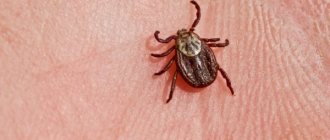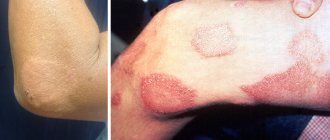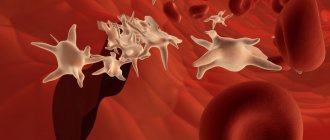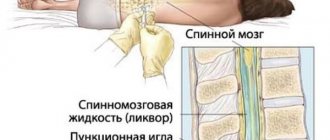disease or syndrome is a systemic autoimmune disease also known as sicca syndrome. Sjögren's disease was named after the Swedish ophthalmologist Heinrich Sjögren. In 1929, he examined and treated a patient who was severely troubled by dry eyes, dry mouth, and joint pain.
In women, Sjogren's disease occurs much more often than in men (in 9 out of 10 cases), and, as a rule, this applies to women after menopause. However, in general, the disease affects people of all genders and ages. There are no global statistics, but in developed countries, including Russia, the incidence is estimated in the millions; Sjögren's disease is one of the most common rheumatic diseases.
With Sjögren's disease, the human immune system perceives the cells of one's own body as foreign and begins to slowly and systematically destroy them. Cells of the immune system enter the tissues of the exocrine glands (lacrimal, salivary, Bartholin's glands of the vagina), infect them, and they begin to secrete less of the corresponding secretion (saliva, tears, etc.).
In addition, the disease often affects other organs, causing arthralgia, pain in the joints, muscles (polymyositis), shortness of breath, etc.
There is also Sjogren's syndrome (secondary inflammation of the salivary and lacrimal glands), which accompanies rheumatoid arthritis, diffuse connective tissue diseases, diseases of the biliary system and other autoimmune diseases.
1
Diagnosis of Sjögren's disease
2 Consultation with a rheumatologist
3 Consultation with a rheumatologist
It is important to consult a doctor at the first symptoms, since “advanced” Sjögren’s disease can become unfavorable and affect vital organs, which often leads to complications, and in rare cases, death.
Definition
Sjogren's syndrome is a disease that is characterized by damage to the exocrine glands - lacrimal, salivary, which leads to the development of pathological conditions and symptoms. The disease is predominantly common among women aged 30-50 years. Sjögren's disease is a pathology that affects epithelial tissues, which provokes dysfunction of the exocrine glands, consisting of myoepithelial cells.
Patients develop disorders - parenchymal sialadenitis (inflammation of the salivary glands), manifested by xerostomia (a feeling of excessive dryness in the mouth due to lack of saliva) and keratoconjunctivitis (inflammation of the conjunctiva and cornea of the eye - cornea), correlating with hypolacrymia (insufficient secretion of the lacrimal glands, leading to to a tear deficiency).
With sialadenitis, stones often form in the salivary ducts, which leads to obstruction (obstruction) of the excretory tract. Sjögren's syndrome is considered in ICD-10 under the code "M35.0". Sjögren's disease is presented in the ICD-10 in a section called “Sink syndrome.”
Sjogren's disease is diagnosed in approximately 25% of patients with chronic connective tissue pathologies, most often caused by systemic diseases, for example, rheumatoid arthritis. Sjögren's syndrome is detected in 75% of patients with liver pathologies correlating with an autoimmune disease (hepatitis of autoimmune origin, biliary cirrhosis). The syndrome occurs less frequently in other chronic autoimmune disorders.
What to do if you suspect Sjögren's syndrome
General urine analysis
Proteinuria is characteristic.
Blood chemistry
Hyperproteinemia, increased levels of γ-globulins, fibrin, seromucoid, sialic acids, and rheumatoid factor in maximum titers are detected.
Immunological studies
Noting an increase in the levels of immunoglobulins IgG and IgM; the presence of antibodies to DNA, LE cells, antibodies to the epithelium of exocrine glands, an increase in the number of B lymphocytes, a decrease in the number of T lymphocytes.
Study of biopsy material
Biopsy of the salivary glands for histomorphological verification of the diagnosis: lymphoplasma cell infiltration from more than one focus, consisting of more than 50 lymphocytes.
Blood test for antibodies to thyroglobulin
The concentration of antibodies to thyroglobulin was increased in 35% of cases.
Rheumatoid factor test
The RF titer may be lowered.
Classification
Sjögren's disease is a condition that is characterized by lymphocytic infiltration of the glands of the exocrine system, which is accompanied by a violation of their functions. In the absence of diseases associated with dry syndrome, the primary form is classified. The secondary form is diagnosed in the presence of interrelated pathologies, against the background of which disturbances typical of SS occur.
Among the primary diseases that provoke the development of SS, it is worth noting systemic sclerosis (scleroderma), rheumatoid arthritis, and lupus erythematosus. Taking into account the nature of the course, chronic and subacute forms of Sjögren's disease are distinguished. Depending on the duration of the course and the nature of the damage, early, advanced, and late stages are distinguished.
Causes
Sjogren's syndrome is a condition that develops under the influence of many factors, which makes it difficult to accurately identify its cause. Pathogenesis involves hereditary factors, genetic mutations, and hormonal disorders. Mechanism of development of disorders: T-lymphocytes initiate the production of cytokines (cells of the immune system), which damage the excretory ducts and lead to narrowing of the ducts of the parotid gland, which correlates with the development of atrophic processes in the affected area.
Dry mouth, regardless of fluid intake
The immune system attacks the glands associated with the production of saliva, which forces the person to constantly drink water.
This can be especially noticeable when a person is eating: they may feel like dry foods, such as crackers, are literally stuck in their throat, especially if they are not washed down with water. Even the taste of certain foods may change due to less saliva. If a person does not eat, constant dryness of the mouth can make the voice hoarse, and the corners of the mouth can become dry and sore.
Symptoms
In the early stages, signs appear after physical and nervous stress. During an ophthalmological examination, symptoms are revealed - thickening, hyperemia (flush of blood) of the skin of the eyelids, swelling in the conjunctival area, disruption of the integrity of the stratum corneum of the eye. The mucous membranes of the oral cavity are colored intensely pink and are susceptible to damage. Sjögren's disease has typical symptoms that determine the tactics of diagnostic examination and treatment. Main features:
- Lack of tears, constant feeling of dryness in the eye area, burning sensation and the presence of sand.
- Redness of the mucous membrane of the organs of vision.
- Itching sensation, irritation of the skin of the eyelids.
- Constant feeling of dryness in the mouth, lips, throat, nose.
- The appearance of cracks and erosion on the lips.
- Dry surface of the tongue.
- Changes in the shape of the face due to an increase in the size of the parotid glands that produce salivary fluid.
- Dry cough.
- Difficulty breathing, shortness of breath.
- Dry skin.
- Increased sensitivity to light stimuli.
- Soreness in muscles and joints.
- Skin rashes in the form of small dots localized in the thighs, legs, and abdomen.
- Increased body temperature.
Among other manifestations of Sjögren's syndrome, it is worth noting a deterioration in appetite, against the background of which weight loss occurs and a state of asthenia develops. The photographs of patients show specific changes in the surface of the tongue, which is covered with erosion grooves, as if forming folds.
The effects of angular stomatitis, provoked by fungi (usually from the genus Candida) or bacteria (usually streptococci), are noted. In later stages, excessive dryness of the oral mucosa, leading to swallowing disorders, causes difficulty while eating. Patients are forced to drink food in order to swallow.
They cannot speak and often suffer from adentia (lack of teeth), caused by multiple foci of caries, mainly in the cervical regions of the teeth. Skin rashes are often represented by photodermatosis (the appearance of hyperpigmented spots) or erythema nodosum (the appearance of painful subcutaneous nodes). In 20% of patients, disturbances in the functioning of the thyroid gland are detected (usually hypothyroidism).
Damage to muscle tissue is manifested by symptoms of myalgia (pain in the muscle area), less commonly myositis (inflammation of skeletal muscle tissue). 70% of patients experience arthralgia (pain in the joints). In 30% of cases, a recurrent form of arthritis (inflammation of joint tissues) is diagnosed, which is manifested by multiple lesions of small joints, most often the distal parts of the upper extremities.
Diagnostics
Diagnosis of Sjögren's disease involves examination of symptoms and medical history. A comprehensive diagnostic examination is carried out if one of the symptoms is detected - excessive dryness in the mouth or in the eye area. Diagnosis of Sjögren's syndrome involves testing the patient who answers questions. During testing, signs are identified that allow a diagnosis to be made. Criteria:
- Daily feeling of discomforting dryness in the eye area for at least 3 months.
- Constant sensation of the presence of sand in the organs of vision.
- Regular (at least 3 times daily) use of pharmaceutical preparations that imitate natural tears.
- Feeling of excessive dry mouth every day for at least 3 months.
- Drink liquid daily with meals to wash down dry food.
Differential diagnosis is carried out in relation to systemic autoimmune diseases (lupus erythematosus, rheumatoid arthritis, scleroderma). The confirmatory criterion is the diagnosed lymphocytic sialadenitis of the focal type. The criteria are not used when diagnosing the syndrome in patients with identified diseases and conditions:
- Conducting radiation therapy in the neck and head area.
- Active type hepatitis C, confirmed by PCR (polymerase chain reaction).
- AIDS (immunodeficiency condition).
- Sarcoidosis (formation of granulomas in tissues).
- Amyloidosis (deposition of a protein compound – amyloid) in tissues.
- Rejection reaction after implantation procedure.
Sjögren's disease is treated by doctors of different specializations, depending on which organs are affected. Consultations with doctors are indicated - internist and rheumatologist, ophthalmologist, dentist (treatment of stomatitis, caries), gastroenterologist (treatment of diseases of the gastrointestinal tract), pulmonologist (treatment of pathologies of the respiratory system).
Diagnostic measures include ophthalmic staining of the cornea with fluorescein, lissamine green, and Schirmer's test (determining the functions of the lacrimal gland, the level of tear fluid production). The level of salivation (salivation) in patients is less than 0.1 ml per minute.
The Schirmer test is a test in which strips of soft, filter paper are placed in both eyes of the patient. Paper strips are placed in the area of the conjunctival sacs for 5 minutes. After a given period, the strips are normally moistened with liquid to a length of 15 mm; the length of the moistened area in patients with dry syndrome does not exceed 5 mm. Instrumental research methods:
- Electrocardiography (determining the functionality of the heart).
- X-ray of the lungs (to identify pathologies).
- Ultrasound of internal organs located in the abdominal cavity and kidneys.
- Gastroscopy (to identify gastric pathologies - atrophic gastritis, ulcers).
The results of a blood test (general, biochemical) show increased ESR and CRP (C-reactive protein), pathological conditions are detected - anemia (hemoglobin deficiency), leukopenia (decreased concentration of leukocytes). Sjögren's disease is characterized by thrombocytopenia (decreased platelet concentration) and hypergammaglobulinemia (increased immunoglobulin concentration), which is taken into account when choosing a treatment program.
Treatment and prevention
Treatment of Sjögren's syndrome is prescribed taking into account the causes and symptoms; in parallel, at an early stage of development, the progression of disorders is prevented. If no serious pathologies of the visual organs, kidneys, lungs, musculoskeletal system, or nervous system are identified, hospitalization is not required. Treatment of Sjögren's syndrome involves the use of drug and non-drug methods. To successfully treat the syndrome, they resort to non-drug methods:
- Maintain favorable conditions for the patient, create an optimal climate regime. Avoid stressful situations, dry, air-conditioned air, cigarette smoke, prolonged eye strain (working at a computer, reading small print, watching TV shows). It is worth refraining from exposure to strong winds and reducing the volume of speech loads.
- Stop taking medications that increase the feeling of dry mucous membranes (as a side effect). These include tricyclic antidepressants, diuretics (diuretics), beta blockers, antihistamines.
- Limit the use of substances that stimulate nervous excitability and have an irritating effect (coffee, alcohol, smoking).
- Avoid prolonged exposure to direct sunlight to avoid the development of photodermatosis.
- Drink water often in small quantities to prevent the development of discomfort. To stimulate salivation, it is advisable to chew chewing gum or suck sugar-free lollipops.
- Maintain oral hygiene and visit the dentist regularly. These measures will help prevent the development of caries, pulpitis, and periodontitis.
- Wear contact lenses that provide a therapeutic effect to prevent damage to the cornea of the organs of vision. Regularly treat lenses with antibacterial agents and moisturize them using special products.
To comprehensively treat Sjogren's disease, methods such as diet therapy and occlusion (impaired patency) of the nasolacrimal duct are used. Artificial point occlusion is performed to reduce the outflow of tear fluid, which ensures better hydration of the eye mucosa. Permanent occlusion can be performed surgically or by cauterization.
Temporary occlusion is achieved using silicone, collagen plugs installed in the nasolacrimal duct in the area of the inlet. Patients are advised to eat a diet rich in vitamins, including foods that provoke increased salivation (fruits, especially citrus fruits, spices). To prevent the development of osteoporosis (decreased bone density), foods high in calcium are included in the diet.
Drug therapy
The syndrome is predominantly treated with corticosteroids (Prednisolone), cytostatics (Chorambucil, Cyclophosphamide), and antitumor drugs from the group of monoclonal antibodies (Rituximab). To ensure systemic action, aminoquinoline agents are often used as an alternative to cytostatics. To treat Sjögren's disease, pharmaceutical drugs are used:
- Immunomodulatory.
- Stimulators of endogenous gland production (for external, local use).
- Artificial tears containing sodium hyaluronate, carboxymethylcellulose, dextran.
- Antibacterial eye drops based on autologous serum.
- Immunosuppressants (local action, for example, Cyclosporine in the form of an ophthalmic emulsion).
- Non-steroidal anti-inflammatory drugs (for local use to eliminate discomfort in the visual area) - Indomethacin, Diclofenac. NSAIDs are used with caution due to possible damage to the cornea.
- Preparations that imitate salivary fluid, containing Mucin, Carboxymethylcellulose.
Taking the drug Acetylcysteine with a mucolytic (secretolytic) expectorant effect eliminates excess dryness in the upper respiratory tract. Considering the high risk of developing secondary fungal (candida) infections in Sjögren's syndrome, antifungal therapy (Nystatin, Fluconazole) is prescribed for prevention.
Patients with symptoms of damage to muscle and joint tissue are prescribed the drugs Hydroxychloroquine, Azathioprine (immunosuppressants, have an anti-inflammatory effect in systemic diseases), Methotrixate (cytostatic), Leflunomide (an antirheumatic drug), Sulfasalazine (sulfonamide, anti-inflammatory drug).
Surgery
Surgical intervention is performed in the later stages in the presence of complications - perforation of the cornea against the background of long-term dry keratoconjunctivitis, development of an abscess in the parotid gland against the background of progressive purulent parotitis (inflammation of the parotid gland).
In case of osteonecrosis (focal necrosis, death of bone or joint tissue), endoprosthetics is performed - a surgical operation to replace joint components with implants. Endoprosthetics are most often performed in the area of the hip and knee joints.
Folk remedies
Treatment of Sjögren's syndrome with folk remedies is carried out using decoctions and infusions prepared on the basis of medicinal herbs with anti-inflammatory, antiseptic, and antibacterial effects. A decoction for rinsing the mouth and washing the eyes is prepared from chamomile flowers and sage herb. Take 1 tbsp. spoon of dry raw materials, pour 1 tbsp. boiling water, keep in a water bath for 15 minutes, leave for 40 minutes.
To lubricate the mucous membranes of the mouth and lips, oil prepared from rose hips or sea buckthorn is used. A slice of peeled, raw potato tuber applied to the eyelid area will eliminate redness of the eyes. Compresses applied to the eyelid area, prepared with chamomile infusion or strongly brewed black tea, will help fight redness of the eyes. Before using folk remedies, you should consult your doctor.
Principles of nutrition
There is no specific diet for Sjögren's syndrome, but there are certain nutritional principles that help minimize unpleasant symptoms. In addition, if you take into account the health of the oral cavity, then it is precisely a properly formulated diet that allows you to protect your teeth from aggressive influences.
Doctors advise first of all to give up alcoholic beverages. In addition, foods containing large amounts of fruit acids should be excluded from the daily menu.
The main diet of a person diagnosed with Sjögren's syndrome should consist of liquid dishes. Doctors advise supplementing treats with a variety of sauces, juicy fruits and vegetables, for example, tomatoes and cucumbers.
The most suitable nutrition option is considered to be a menu with a large amount of fresh food and a minimum amount of sweets and saturated fats.
Forecast
The condition of dry syndrome usually does not threaten the patient’s life. The exception is cases when the progression of concomitant pathologies leads to the development of life-threatening conditions - purulent abscesses localized in the head area, secondary infections, especially with damage to the lungs (bronchopneumonia), acute renal failure, lymphoma. Most manifestations of Sjögren's syndrome are now successfully treated.
Sjögren's syndrome is a condition characterized by systemic (multiple) damage to parts of the body, accompanied by diseases of the kidneys, visual organs, nervous system, musculoskeletal system, and dentistry. Timely diagnosis and correct therapy help improve the patient’s condition.
List of sources
- Rheumatic diseases. Ed. V.A. Nasonova, N.V. Bunchuk. M., Medicine; 1997;
- Vasiliev V.I. Sjogren's disease: clinical, laboratory, immunomorphological manifestations and prognosis: dis. Dr. med. Sci. -M., 2007;
- Nasonov E.L. Anti-inflammatory therapy for rheumatic diseases. M.: M-CITY, 1996;
- Solovyov S.K., Ivanova M.M., Nasonov E.L. and others. Intensive therapy of rheumatic diseases. M.: MIC, 2001;
- Vasiliev, V. I. Sjögren’s syndrome: a guide for doctors / V. I. Vasiliev, V. G. Likhvantseva, T. N. Safonova. - M., 2013.








